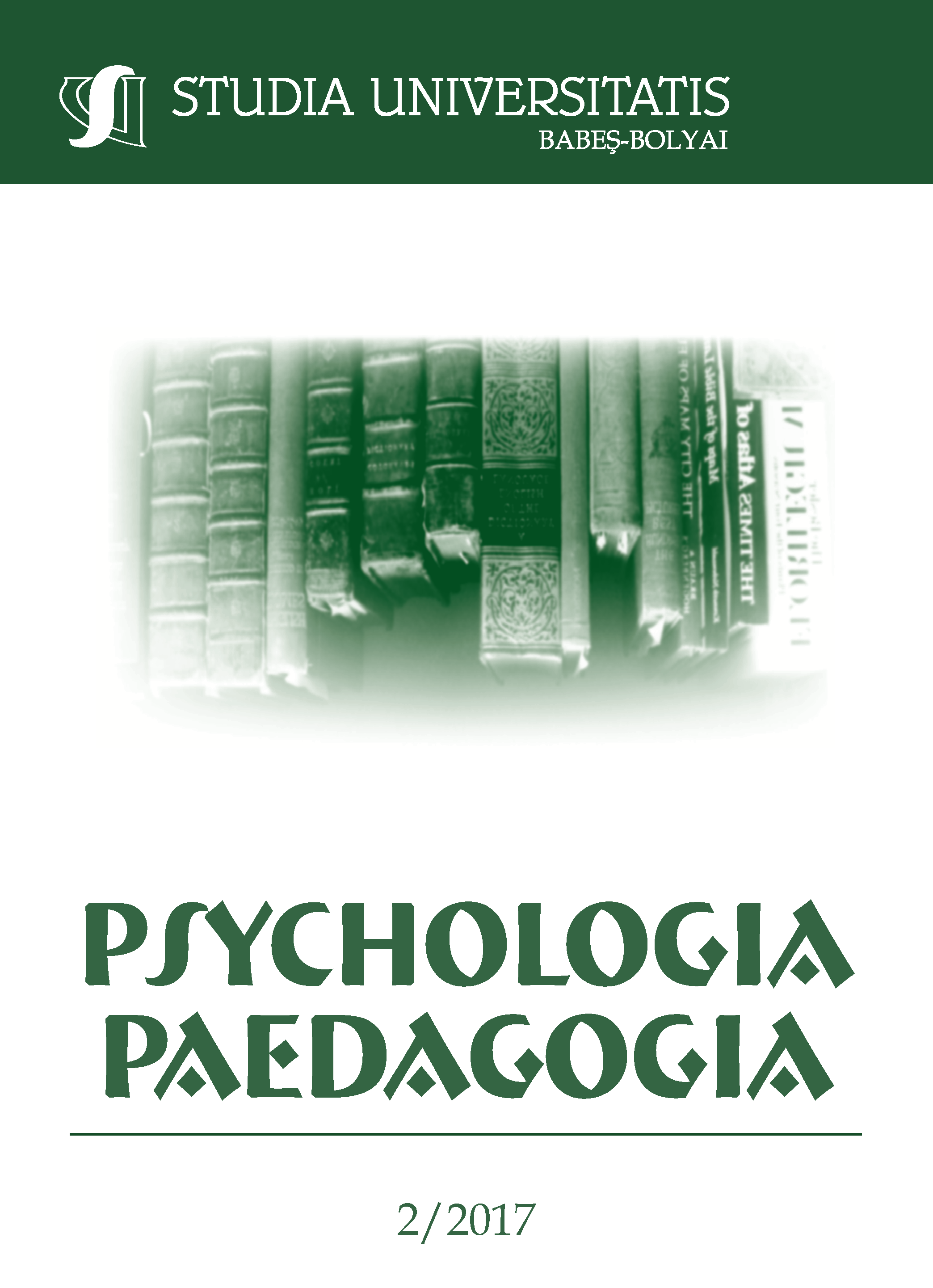«INTENTIONAL» STYLISTICS AND «ATTENTIONAL» STYLISTICS IN “ORBIS SENSUALIUM PICTUS” BY JAN AMOS COMENIUS
DOI:
https://doi.org/10.24193/subbpsyped.2017.2.02Keywords:
intentional stylistics, attentional stylistics, conditional literariness, literalness, literariness, literal exemplification, metaphoric exemplification, lecturer's functional skillsAbstract
The discursive manner of Orbis sensualium pictus is marked by the existence of differences in the referential register which condition the literariness of the book in a transtextual mode, since the literariness of the work – similar to its attentional stylistics – does not pertain to the realm of some “constitutive literariness” (having an institutionalised aesthetic purpose), but rather belongs to a so-called “conditional literariness”. The analysis proposed is centered upon the early emergence of certain integral patterns of the literariness of children’s literature which configure, in Orbis sensualium pictus, typological structures and fictional conventions characteristic to the realm of conditional literariness and attentional stylistics. The events of textual literal aspect exist both “intentionally”, and “attentionally” in the receptor’s consciousness or attention. The mutation from “intentional” stylistics to “attentional” stylistics redefines the phenomenon of the literariness by relating it to the two main axles in the referential functioning of linguistic signs, regarding the dialectics between the object world and the text world: the denotative axle of the literal exemplification in the syntagmatic plan of the “intentional” aspect (literalness or stylistics of common speech), respectively the axle of the stylistic expressiveness, into the paradigmatic plan of the “attentional” aspect (literariness or stylistics of the speech considered literary). Upon such foundations is based the entire research, focusing on Orbis sensualium pictus as a comprehensive attempt to involve the lecturer's functional skills at an early school-age. For the references to the English text of J.A. Comenius’s work, we have used Charles Hoole’s translation (C.W. Bardeen, publisher, 1887). All quotations, chapter titles, etc. included hereafter are taken from this edition, and reproduce faithfully the English translator’s choice of words.
Die diskursive Art von Orbis sensualium pictus ist durch das Vorhandensein von Unterschieden im Referenzregister gekennzeichnet, welche die Literalität des Buches in einer transtextuellen Weise konditionieren, da die Literarität des Werkes - ähnlich seiner Aufmerksamkeitsstylik - nicht in den Bereich einer "konstitutiven Literarität" (mit einem institutionalisierten ästhetischen Zweck) gehört, sondern zu eine so genannte "bedingte Literarität". Die vorgeschlagene Analyse konzentriert sich auf das frühe Auftauchen bestimmter integraler Muster der Literarität der Kinderliteratur, die in Orbis sensualium pictus typologische Strukturen und fiktionale Konventionen konfigurieren, die charakteristisch für den Bereich der konditionalen Literarität und attentionalen Stilistik sind. Die Ereignisse des textuellen wörtlichen Aspekts existieren sowohl "absichtlich" als auch "aufmerksam" im Bewusstsein oder in der Aufmerksamkeit des Empfängers. Die Mutation von "absichtlicher" Stilistik zu "aufmerksamer" Stilistik definiert das Phänomen der Literalität neu, indem sie sich auf die beiden Hauptachsen im referentiellen Funktionieren sprachlicher Zeichen bezogen auf die Dialektik zwischen der Objektwelt und der Textwelt bezieht: die denotative Achse der buchstäblichen Veranschaulichung im syntagmatischen Plan des "absichtlichen" Aspekts (Literalität oder Stilistik der gemeinsamen Sprache) bzw. der Achse der stilistischen Ausdruckskraft, in den paradigmatischen Plan des "aufmerksamen" Aspekts (Literalität oder Stilistik der literarisch angesehenen Rede). Auf diesen Grundlagen basiert sich die gesamte Forschung, wobei Orbis sensualium pictus als ein umfassender Versuch betrachtet wird, die funktionalen Fähigkeiten des Dozenten in einem frühen Schulalter einzubeziehen. Für die Verweise auf den englischen Text von J. A. Comenius 'Arbeit haben wir die Übersetzung von Charles Hoole verwendet (C. W. Bardeen, Herausgeber, 1887). Alle nachfolgenden Zitate, Kapitelüberschriften usw. stammen aus dieser Ausgabe und geben die Wortwahl des englischen Übersetzers getreu wieder.
Schlüsselwörter: absichtliche Stilistik, aufmerksame Stilistik, konditionelle Literarität, Literalität, Literarisch, buchstäbliche Veranschaulichung, metaphorische Veranschaulichung, funktionale Fähigkeiten des Dozenten
References
Antonesei, L. (2016). O frumoasă ispravă cărturărească, 21.09.2016; consultat on-line la data de 05.06.2017: https://antoneseiliviu.wordpress.com/2016/09/21/o-frumoasa-isprava-carturareasca/
Bourdieu, P. (1980). Le sens pratique. Paris: Minuit.
Breaz, M. (2008). Stilistică „intenţională”, stilistică „atenţională”. Din nou despre literaritatea literaturii pentru copii. In: Bocoş, M.; Chiş, V.; Albulescu, I. & Stan, C. (coord.), Tradiţii, valori şi perspective în ştiinţele educaţiei. Cluj-Napoca: Editura Casa Cărţii de Ştiinţă, pp. 275-278.
Breaz, M. (2017). At the beginnings of the children’s literature: Orbis pictus or about the first illustrated encyclopedia for children in the history of literature. In: Journal of Romanian Literary Studies – JRLS, Nr. 11/ 2017. Tîrgu-Mureș: Editura Arhipelag XXI Press, pp. 127-135.
Buzași, I. (2016). O carte clasică din literatura pentru copii. In: Steaua, Anul LXVII, Nr. 8 (814), August 2016, Cluj-Napoca, pp. 47-48.
Ciortea, M. (2016). Studiu introductiv. In: Comenius, Jan Amos (2016). Orbis sensualium pictus/ Lumea sensibilă în imagini. Cluj-Napoca: Editura Argonaut, pp. IX-XLIX.
Comenius, J. A. (2016). Orbis sensualium pictus/ Lumea sensibilă în imagini, Bilingual Edition in Latin and Romanian (Ediție bilingvă latină și română). Edition supervised, Romanian Translation, introductory study, chronological table, note on the edition and dictionary by Marcela Ciortea. Foreword Eva Mârza. Cluj-Napoca: Editura Argonaut.
Schaeffer, J.-M. (1996). Stilistica. In: Noul dicţionar enciclopedic al ştiinţelor limbajului. Bucureşti: Editura Babel, pp. 119-126.
Schaeffer, J.-M. (1996a). Poetica. In: Noul dicţionar enciclopedic al ştiinţelor limbajului. Bucureşti: Editura Babel, pp. 127-139.
Spiridon, M. (1984). Despre aparenţa şi realitatea literaturii. Bucureşti: Editura Univers.
Vianu, T. (1966). Dubla intenție a limbajului și problema stilului. In: Arta prozatorilor români. București: Editura Pentru Literatură, pp. 11-19.
Downloads
Published
How to Cite
Issue
Section
License
Copyright (c) 2017 Studia Universitatis Babeș-Bolyai Psychologia-Paedagogia

This work is licensed under a Creative Commons Attribution-NonCommercial-NoDerivatives 4.0 International License.





